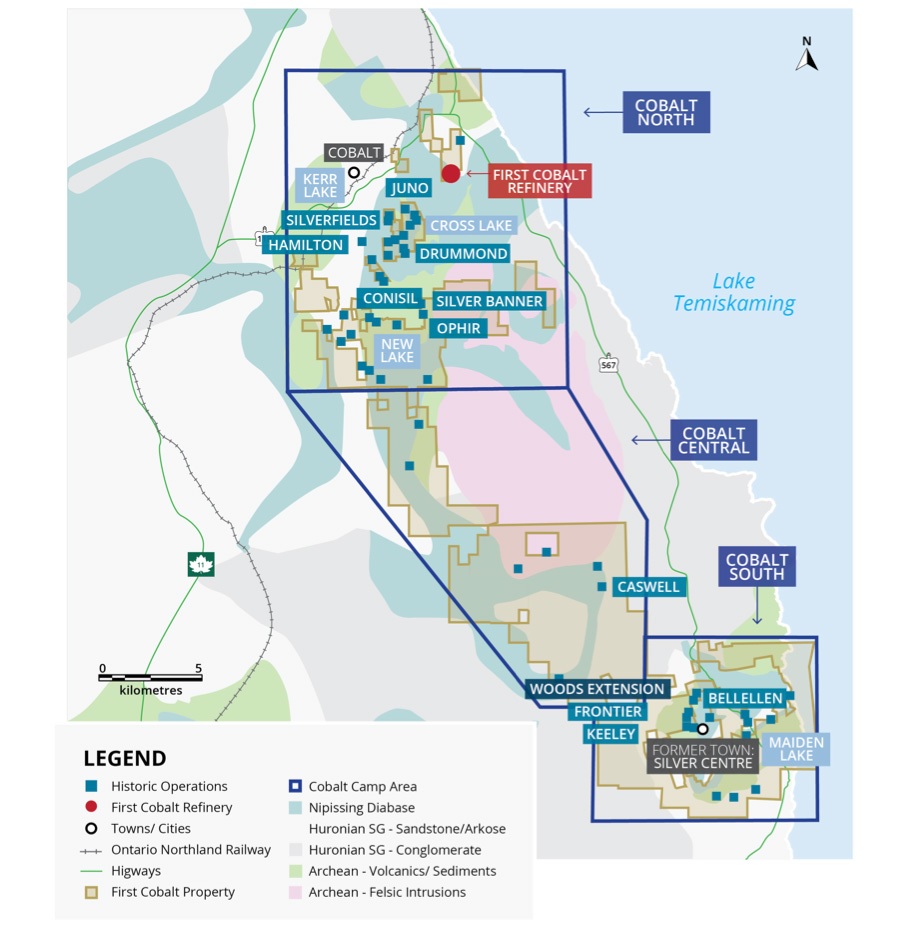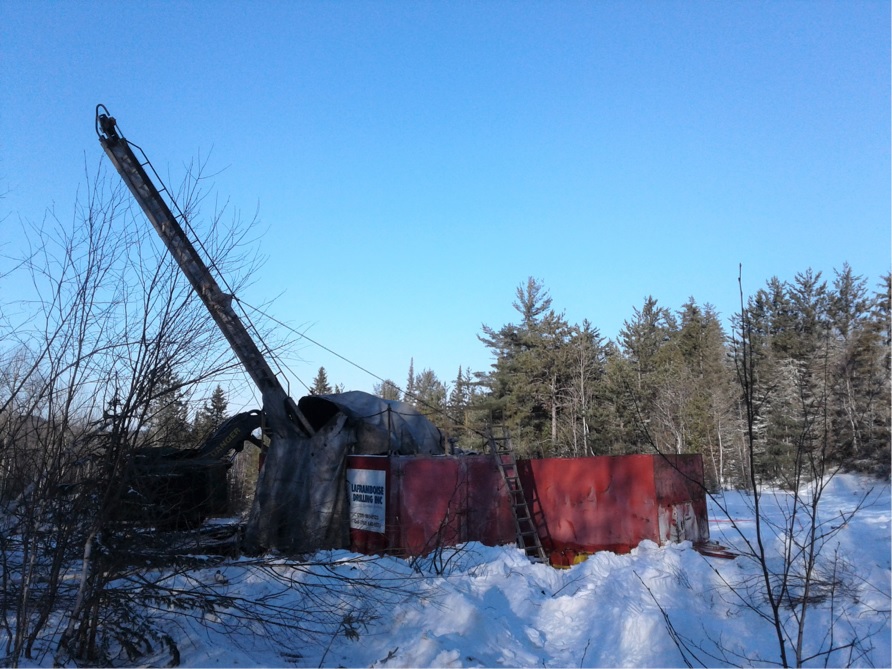
First Cobalt (FCC.V) has published its new year resolutions as it has announced its 2018 exploration program in Canada’s Cobalt Camp. Whilst the 2018 program will continue to focus on mapping, prospecting and geophysical surveys, First Cobalt has also earmarked funds for a 26,500 meter drill program across no less than 13 targets which could provide access to near-surface material.
This indicates an average of just 2,000 meters will be drilled per target which seems relatively low, but as VP Exploration Frank Santaguida explains, the 2017 exploration program (which consisted of 61 drill holes) has provided new insights on structural controls whilst the assays returned several types of cobalt mineralization with the occurrence of several by-product minerals.
A good example of this are the recently-released assay results from the so-called Woods Extension area where the drill bit intersected what appears to be a new vein right in between the Watson and Woods veins. The intervals of 40 centimeters are quite narrow, but the grades are pretty good with 0.57% cobalt and 1.4% nickel (representing an in-situ value per tonne of US$550/t) and another 40 centimeter interval containing 0.34% cobalt ($225/t) – which could be interpreted as the extension of the Watson vein system.

As a reminder, this Watson-Woods system is located just a few hundred meter north of the Keeley-Frontier mine, and First Cobalt remains convinced the potential to find more cobalt mineralization north of K-F remains high as new information seems to indicate the Watson vein is bending around dykes so it’s clear a fresh set of eyes does appear to find new elements which was overlooked by the previous owners and operators which had to fall back on less advanced methods and technologies.
Go to First Cobalt’s website
The author has a long position in First Cobalt. First Cobalt is a sponsor of the website. Please read the disclaimer

